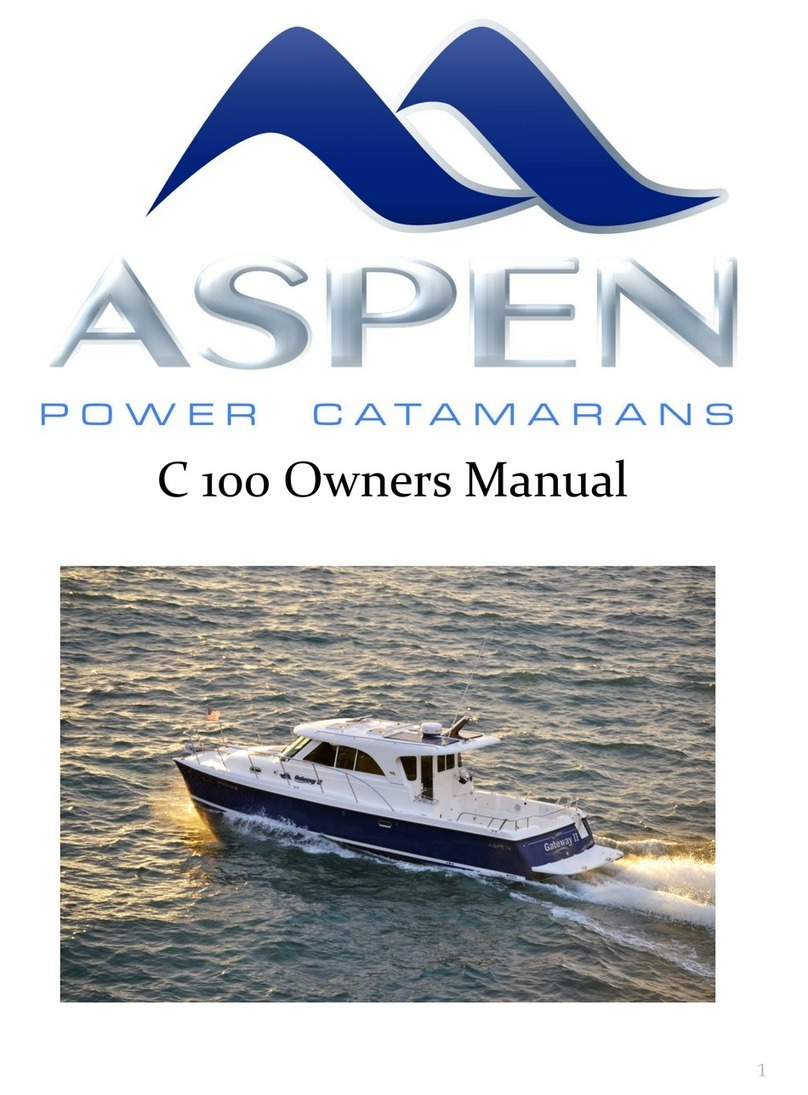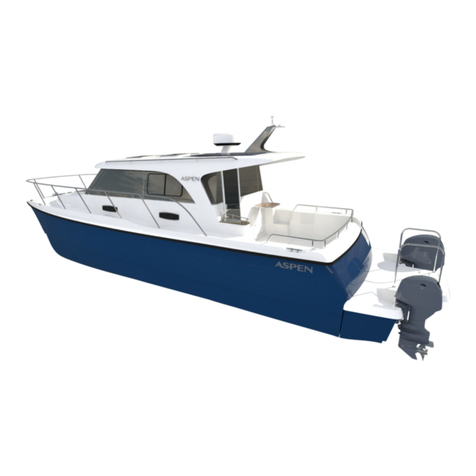/01%$2&!(*.,"%+&3#$40552&6-&&&&&&&&&&&&&
7-&8-9*-%&:##4&
The C90 has three main battery switches , House On/Off ,Engine On /Off,
and Emergency Parallel. The normal operation position is to leave both
Engine$and$House$switches in the On Position, Emergency Parallel is Off.
Emergency parallel is rarely used, the boat has a Blue Sea’s Voltage
Sensitive relay (black box near switches) it disconnects the House Batteries
from the Start Battery. When the voltage on the Start Battery drops below
12.7 volts it disconnects, once the charging system has brought the Start
Battery back up to 12.7 volts it reconnects to the house battery bank.
The Batteries have three charge sources, First, 2 ProMariner Chargers (8A
for Start Battery and 20A for House Battery) Shore Power is connected and
AC Breakers at dash are switched on. Second, two 80W Solar Chargers
(10A) while anchored-automatic, Third is a 125A engine driven Alternator.
Thruster Battery Switches, These are mounted below the main
battery switches and are normally on. These must be switched off
when swimmers are in the water or for service. The thrusters are
very powerful and will suck objects in the water toward them. Do
not operate Thruster for more that 30 seconds at one time or motor
may over heat.

































